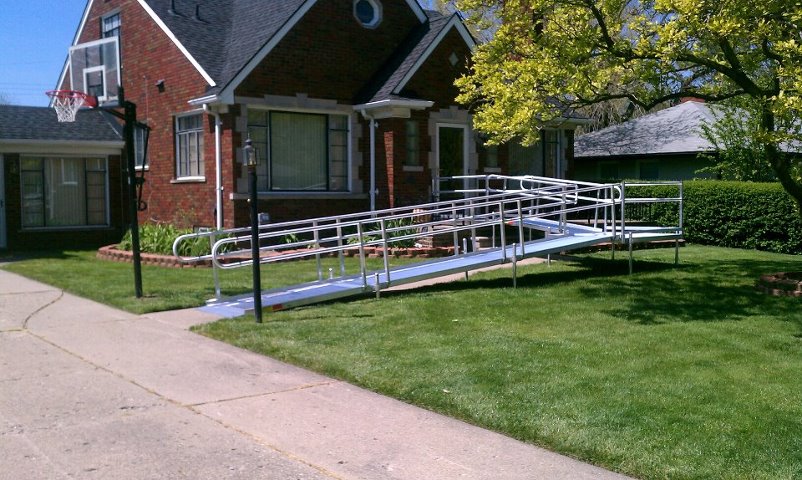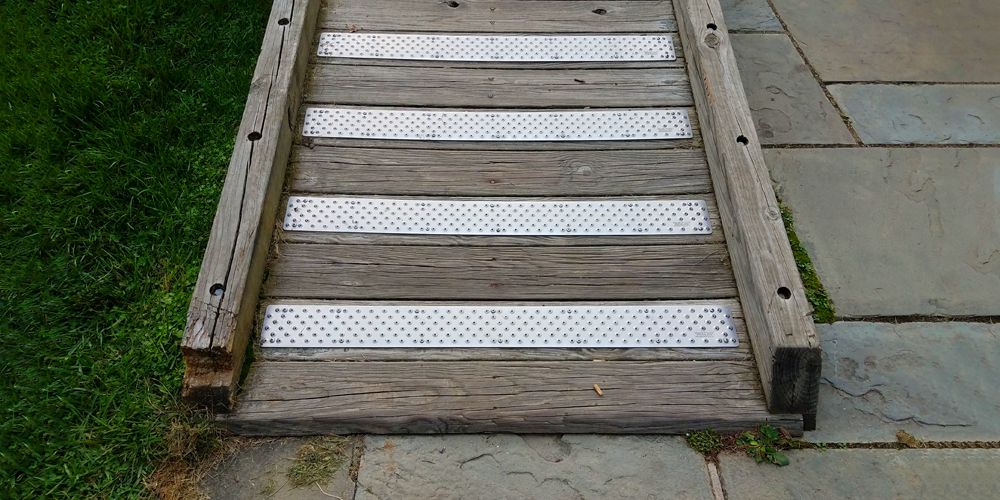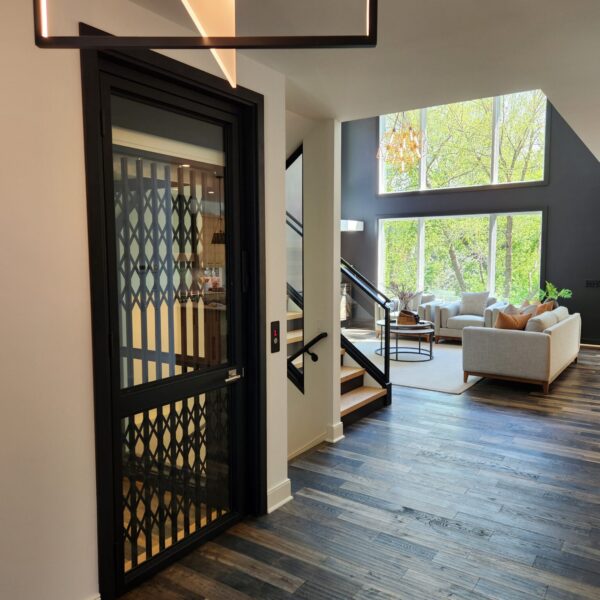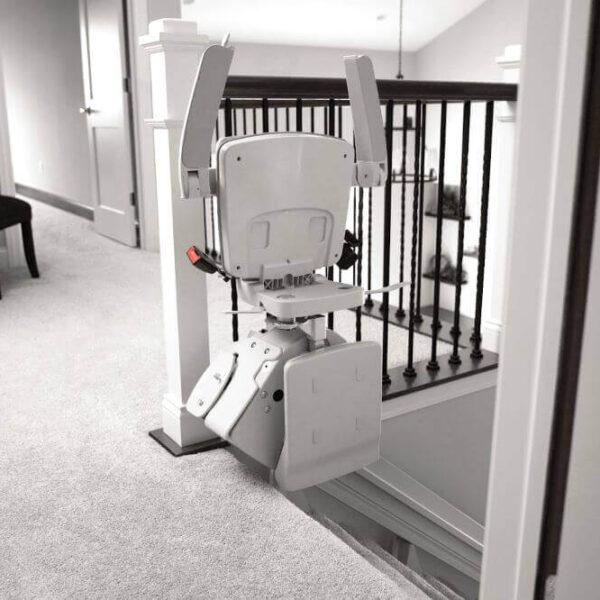
Outdoor Accessibility: Ramps, Pathways, and Gardens Designed for Mobility and Independence
December 5, 2024
How to Incorporate Wheelchair Ramps Without Compromising Curb Appeal
December 17, 2024Building a wheelchair ramp is crucial in fostering an accessible and inclusive environment, be it for a residence, a business, or a public area. One of the key decisions in this process is whether to undertake the project independently or engage a professional. While DIY projects can be cost-effective and provide a sense of achievement, professional installation offers expertise and peace of mind. Understanding the benefits and challenges of each approach is vital. In this guide, we’ll delve into the key considerations, advantages, and potential pitfalls of DIY and professional wheelchair ramp installations, emphasizing the importance of adhering to ADA guidelines for safety and accessibility.
DIY Installation: Pros, Cons, and Key Considerations
Building a wheelchair ramp yourself can be rewarding, but it requires careful planning and execution. Here are the main factors to consider when considering a DIY approach.
Pros of DIY Installation:
- Cost Savings: DIY ramps typically cost less because you save on labor fees. You only need to budget for materials and tools.
- Customization: Building the ramp allows for a tailored design that fits your needs and preferences.
- Personal Accomplishment: Completing the project yourself can be fulfilling, giving you a sense of pride in creating a functional and accessible space.
Cons of DIY Installation:
- Skill Requirements: Constructing a safe and durable ramp requires carpentry skills, knowledge of ADA guidelines, and an understanding of structural integrity.
- Time-Consuming: Designing, sourcing materials, and building the ramp can take significant time, especially for first-time builders.
- Potential for Mistakes: Construction errors could lead to safety hazards, additional costs, or the need for professional intervention.
Key Considerations for DIY:
- Research ADA guidelines to ensure the ramp meets accessibility standards.
- Use high-quality, durable materials suitable for outdoor conditions.
- Plan for adequate drainage and traction to prevent slipping hazards.
DIY ramps are ideal for those with construction experience, a limited budget, and the time to invest in a detailed project.
Professional Installation: Benefits and Potential Drawbacks
Hiring a professional for wheelchair ramp installation offers many advantages, particularly for complex or permanent structures. However, it may not be the right choice for everyone.
Benefits of Professional Installation:
- Expertise: Professionals have the training and experience to design and build ramps that meet safety and accessibility standards.
- Efficiency: A professional team can complete the project faster than a DIY effort, minimizing disruption to your daily life.
- Peace of Mind: You can trust that the ramp will be structurally sound and compliant with regulations, reducing liability concerns.
- Customization with Guidance: Based on your needs and the site’s characteristics, professionals can suggest design enhancements, materials, and features.
Potential Drawbacks:
- Higher Costs: Professional installation involves labor fees, making the project more expensive than a DIY approach.
- Limited Control: While you’ll have input, the final design may not be as personalized as a DIY ramp.
- Scheduling: Finding and scheduling a reliable contractor may cause delays, especially during peak seasons.
Professional installation is ideal for those who prioritize safety, efficiency, and compliance or who lack the skills and time for a DIY project.
Understanding ADA Guidelines and Why They Matter
Regardless of whether you choose DIY or professional installation, understanding and adhering to the Americans with Disabilities Act (ADA) guidelines is not just critical, but also a responsible choice. These standards ensure that ramps are safe, functional, and accessible for all users.
Key ADA Requirements for Ramps:
- Slope Ratio: The ramp should have a slope of 1:12 (1 inch of rise for every 12 inches of run).
- Width: The minimum clear width of the ramp should be 36 inches.
- Landings: Level landings are required at the top and bottom of the ramp and at intervals for longer ramps.
- Handrails: Ramps with a rise of more than 6 inches should have handrails on both sides.
- Surface: The ramp’s surface must be stable, firm, and slip-resistant.
Why ADA Compliance Matters:
- Safety: Adhering to ADA standards minimizes the risk of accidents, such as slips or falls.
- Usability: Compliant ramps accommodate a variety of mobility aids, including wheelchairs, scooters, and walkers.
- Legal Protection: Compliance is legally required for businesses and public spaces and protects against potential lawsuits.
By understanding and implementing these guidelines, you can ensure your ramp is both functional and legally compliant, thereby promoting safety and accessibility for all users.
Cost Comparison: DIY vs. Professional Installation
Cost is often a significant factor in deciding between DIY and professional installation. Here’s a breakdown of potential expenses to help you budget effectively.
DIY Installation Costs:
- Materials: Depending on the type of ramp (wood, aluminum, or concrete), materials can cost between $500 and $2,000.
- Tools: If you don’t already own the necessary tools, purchasing or renting them can add $100 to $500.
- Time Investment: While it doesn’t have a direct monetary cost, the time spent on research, planning, and construction is valuable.
Professional Installation Costs:
- Labor Fees: Labor costs vary but typically range from $1,000 to $3,000, depending on the project’s complexity.
- Materials: Professionals may offer bulk discounts on materials, but the overall cost is generally higher than DIY.
- Permits and Inspections: Professionals often handle permits and inspections, which can cost an additional $100 to $300.
Long-Term Value:
While DIY projects may be cheaper upfront, a professionally installed ramp may save money in the long run by avoiding costly repairs or adjustments.
Tips for Making the Right Choice
Deciding between DIY and professional installation involves evaluating your specific circumstances and priorities. Here are some tips to help you make the best decision:
Assess Your Skills and Resources:
- Do you have the necessary tools and experience to build a safe, durable ramp?
- Are you willing to dedicate the time required for planning and construction?
Evaluate the Complexity of the Project:
- Is the ramp straightforward, or does it involve challenging site conditions or design requirements?
- Are there local codes or permits that you’ll need to navigate?
Prioritize Safety and Compliance:
- Can you confidently meet ADA guidelines on your own?
- Would a professional’s expertise provide greater peace of mind?
Factor in Your Budget:
- Can you afford the upfront cost of professional installation?
- Are you prepared to invest in high-quality materials and tools for a DIY project?
By weighing these factors, you can choose the option that aligns best with your needs, skills, and resources.
Building a wheelchair ramp is a meaningful investment in accessibility and inclusivity. Whether you choose to tackle the project yourself or hire a professional, the decision should be guided by your skills, budget, and priorities. DIY installation can be cost-effective and rewarding for those with the necessary expertise, while professional installation offers efficiency, compliance, and peace of mind. By understanding the pros and cons of each approach and adhering to ADA guidelines, you can create a ramp that is both functional and aesthetically pleasing. Ultimately, the goal is to ensure safe and easy access for all users, making your space more welcoming and inclusive.
At CAPS Remodeling, we understand the unique needs of every homeowner and provide expert guidance and installation services to create ramps that are both functional and tailored to your space. Contact us today to ensure your wheelchair ramp is built to last with quality and precision!

Introducing Jeff Cates, the visionary Founder and Owner of CAPS Remodeling. After experiencing a profound personal event involving his son in 2007, Jeff was inspired to serve a higher purpose: to create safer, more comfortable, and independent living conditions for the elderly and disabled by modifying their current homes. Jeff’s deep-seated religious beliefs form the moral compass that steers CAPS daily operations. Apart from his unwavering dedication to his work, Jeff finds joy in boating and cherishing moments with his family.




